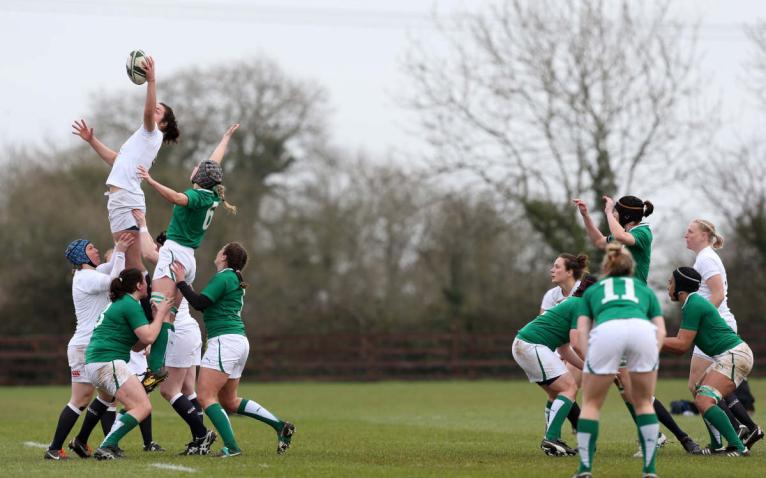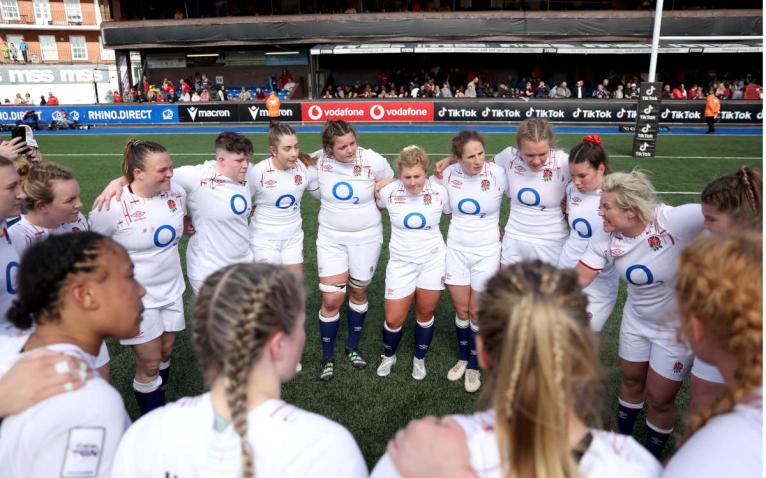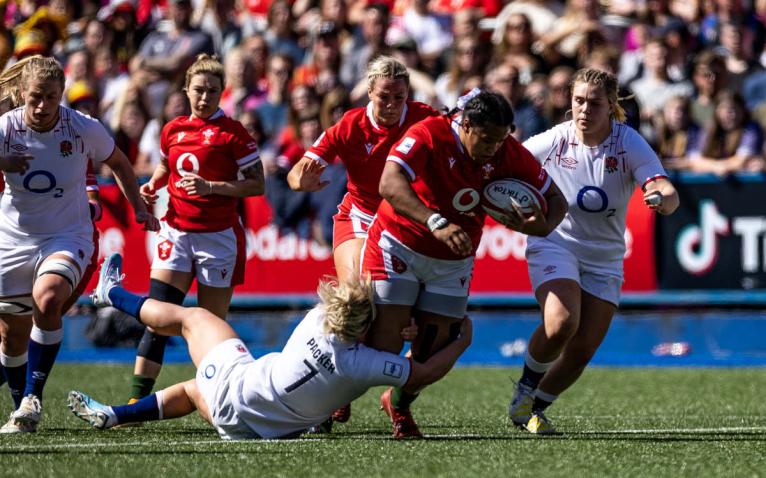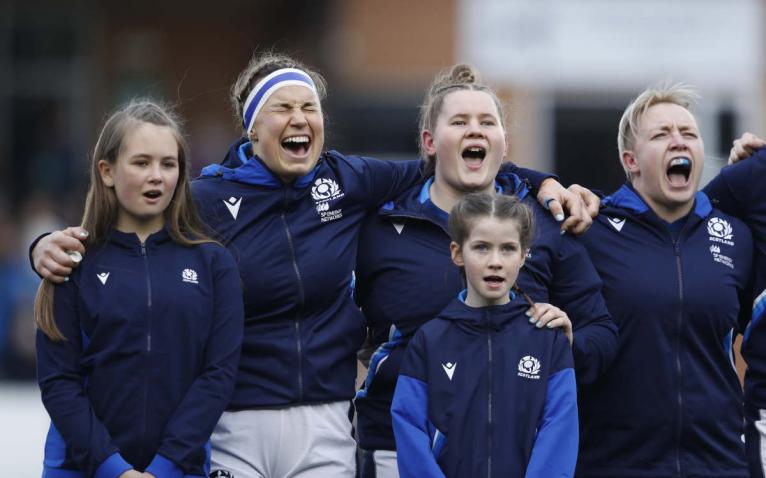Last month marked the 10th anniversary of Ireland’s first and only Women’s Six Nations grand slam.
Sealed with a narrow 6-3 defeat of Italy on the outskirts of Milan on 17 March 2013, the campaign had been catalysed four weeks previously when England were put to the sword at Ashbourne Recreation Ground.
On the eve of that England match, Alison Miller joked with room-mate Siobhan Fleming about scoring a hat-trick of tries in an Ireland win. It seemed an absurd prospect. As it turned out the winger needed only 35 minutes to cross the whitewash three times and put her side on course for a 25-0 victory.
The result came at a time when English heads were turned by sevens – the Red Roses were missing eight players who would propel them to Rugby World Cup glory the following year – but regardless, victory heralded the beginning of Ireland’s most successful period in women’s Test rugby.
Eighteen months later, Miller was again on the scoresheet as Ireland became the first team in 23 years to beat New Zealand at a women’s Rugby World Cup. Eventual champions England ended their run in the semi-finals in France but were beaten in Ashbourne again during the 2015 Six Nations as the Irish went on to celebrate a second Championship success in three attempts.
With a home World Cup on the horizon in 2017, it provided a platform from which the team, with the right backing and support, could have soared. But things, as we know, have not worked out that way.
“We won the grand slam in 2013 and we went to that World Cup (in 2014) with the belief and the ability to know we could do great things,” former Ireland centre Grace Davitt tells RugbyPass+.

“I saw an article last week and it said Ireland just didn’t fire in time. You know, that was the time to go, ‘Right, we need to do something now’ … We missed the boat.”
Memories of those triumphs in 2013 and 2015 have faded in the intervening years and Ireland welcome England to Cork on Saturday with a very different idea of what would constitute success. For some, keeping the Red Roses to double digits would be a victory.
Ireland are emerging from an incredibly difficult period but they are not alone in feeling fragile when faced by the English juggernaut. In the eight years since Niamh Briggs kicked the Irish to an 11-8 win against the Red Roses in Ashbourne’s compact surrounds, England have lost only three Championship matches, all to France.
You can understand why there are fears that England could run up the first 100-point score in Six Nations history against an Ireland team low on confidence and at the beginning of a long rebuilding process
During that period, England’s Six Nations record against the other four nations – Ireland, Italy, Scotland and Wales – is played 30, won 30, points for 1,499, points against 171. That’s an average score of 50-6, give or take a decimal place. Their ruthless run has continued during the ongoing Championship, in which the Red Roses have been hampered by injuries and the retirement of Sarah Hunter but still beaten Scotland 58-7, Italy 68-5 and Wales 59-3.
In that context, you can understand why there are fears that England could run up the first 100-point score in Six Nations history against an Ireland team low on confidence and at the beginning of a long rebuilding process. The Red Roses team sheet for the encounter in Cork will only have heightened those concerns.
Whatever happens at Musgrave Park this weekend, though, it is apparent that the Six Nations has become a fragmented tournament. At the top sit England, unbeaten in the Championship since 2018 and comfortably ahead of France. Les Bleues have themselves coped serenely with coaching change and the loss of several key players but their rivalry with the Red Roses has become skewed heavily in favour of their opponents.

England have won the last 11 encounters between the sides in all competitions, dating back more than five years, but Les Bleues remain the one team in the Championship that can put them under serious and sustained pressure.
Beneath the big two, sit everyone else. Wales, in the second year of professionalism, and Italy, who have improved steadily over the past decade, may appear to have the upper hand at present but effectively each of the four nations can beat the others with a fair wind behind them.
The reasons why the Six Nations has become so distilled are manifold but can essentially be boiled down to numbers. England and France have the most resource of the six unions, they have the biggest player pools, more mature pathways replenishing those stocks and a stronger league system to ensure the best talent is retained and given meaningful competition.
According to figures released by the Rugby Football Union (RFU) last year, there are more than 40,000 women and girls registered to play in England. That number is comparable with the total number of active players – men, women, girls and boys – in each of Ireland, Italy, Scotland and Wales. As someone involved in development joked last week, the RFU could afford to do nothing and still maintain their competitive advantage.
The RFU has the player base that allows it to take a long-term view, whereas their neighbours have each had to call on young, raw talent in recent years to plug gaps in the here and now.
The problem for those chasing England is, of course, the RFU are doing anything but standing still. Age-grade coaches from each union were given an insight into the ways in which the current Championship leaders develop talent during a conference on the sidelines of last week’s women’s Six Nations U18 Festival in Berkshire.
The England Rugby Girls’ Developing Player Programme was launched by the RFU last August. It aims to identify talent from U16 level, giving those players access to increased training and playing opportunities and potentially guiding them onto Centres of Excellence and age-grade national teams, before they are ready to play senior rugby in their early 20s.
“We hopefully won’t make the mistake of picking early physical developers or those who give you perception of long-term ability for the sake of leaving other people out,” Don Barrell, the RFU’s head of performance pathways and programmes, says. “All our programmes remain super open to people who are late into the game… No World Cup’s won at under-18s rugby.”
It is the kind of system that Ireland, Scotland and Wales are each trying to implement but is also an example of England building from strength. The RFU has the player base that allows it to take a long-term view, whereas their neighbours have each had to call on young, raw talent in recent years to plug gaps in the here and now.

At the top level, the introduction of professional contracts has given national team players an opportunity to focus fully on rugby, while providing those further down the pyramid with a reason to dream. But contracts alone do not create a healthy pipeline.
Work is being done to strengthen, resuscitate in some cases, the pathways that serve the national teams in Ireland, Scotland and Wales but results will not appear overnight. “They are putting money into it now but it’s going to take time,” Fiona Coghlan, who captained Ireland to the grand slam in 2013, says.
“I think we need to look at these under-18 players coming through now and it’s probably going to be five years before we really see them get experience at a higher level and for our structures to develop.”
Legendary pioneer Liza Burgess is leading the Welsh Rugby Union’s efforts to reinstate its talent pipeline. This season the WRU ran teams at U18, U20 and U23 level, albeit with crossover between sides, and the aim of the programme more generally is to provide every young female player with access to top-level coaching and support. There is also hope that the Exiles programme that has had success in the men’s game can have a similar impact for women.
Burgess is bursting with pride and energy as she discusses her current role. “I’m privileged to work with the next generation,” she says. “There’s still a lot to do, everyone’s clear about that. We’re just at the start of our journey, getting things back in place and trying to support those systems that are coming through now. But there’s a really good buzz down here.”
Resource remains an issue. Burgess is one of only four full-time staff working on women’s pathways at the WRU, one of whom has been seconded to the senior side for the duration of the Six Nations.
But as that work continues, resource remains an issue. Burgess is one of only four full-time staff working on women’s pathways at the WRU, one of whom has been seconded to the senior side for the duration of the Six Nations.
Perhaps unsurprisingly for someone who played such a pivotal role in the development of the women’s game the UK, Burgess has some ambitious goals for Wales. “We want to be the best team in the world,” she admits. And to do that she understands that more Wales players, ideally all Wales players, need to be playing at home.
Burgess, a founding member of Saracens and former coach at Gloucester-Hartpury and Worcester Warriors, is no anti-Premier 15s zealot. England and its league, she says, have been “fantastic” in offering players from Wales, Ireland, Scotland and further afield a chance to play seriously competitive rugby. As Elinor Snowsill recently told RugbyPass, “it’s a really interesting time period in the women’s game where unions have to try and figure out what’s best for their players, but also what’s best for the development of the game in their country”.
If Wales want to one day challenge England and France and qualify for another World Cup semi-final, then they need access to a competitive league that gives the country’s best players the option to play and train at home. This is something Ireland and Scotland have identified too. England, as the dominant country in the UK, will always be able to offer players enticing educational and professional opportunities but it shouldn’t be the only route available.
Should the unions be proved correct, however, they might already have stumbled upon the solution. The Celtic Challenge is a cross-border competition featuring teams from Ireland, Scotland and Wales that is financially supported by World Rugby as a step between the club and international game.
The inaugural season, which featured three teams and took place in January and February, was given a launch so soft that competing unions were unsure exactly how far they could go in promoting it. Indeed, with a short preparation window and without the bulk of each country’s England-based players, that first edition, which was won by Ireland’s Combined Provinces, was geared towards development rather than performance.

But the aim is to expand the Celtic Challenge in years to come so that two to three sides compete from each nation. There is also hope it could become semi-professional in time. “It’s a great initiative,” Scotland centre Emma Orr, who represented the Thistles, says. “It’s really good to give younger players experience at that level of rugby, so that it isn’t such a jump that you put some players off.”
“From a Scottish point of view, it really bridged the gap this year for those players that were still in Scotland and gave some of the younger players a bit of a shop window to put themselves in front of the national coaches,” Thistles coach Claire Cruikshank adds.
“I think those younger players, that 18, 19-year-old age profile who haven’t experienced that level of rugby, for them it was brilliant to experience it and realise what it takes to perform at that level, what they need to go away and work on, how different it is, the pace of it, the physicality, compared to what they’re used to at their clubs.”
As the quality of the competition improves, it is hoped it will encourage players to return to Ireland, Scotland and Wales from England. That may happen naturally given the RFU is due to introduce quotas for the number of English-qualified players in Premier 15s match-day squads, a move that should only strengthen the Red Roses. “100 per cent we want our players in Wales,” Burgess says. “That’s the only way we can strengthen our league.”
Following years of apathy those nations chasing England and France cannot afford to make any major missteps as they build for the future.
Cruikshank, though, cautions against expanding before the unions are ready. “The more competitive opportunities there are for players the better, but you’ve got to make sure that you’ve got the bottom of the pyramid,” she explains. “If you’ve only got a certain number of players and you spread them too thin, does that then dilute the quality?”
Following years of apathy those nations chasing England and France cannot afford to make any major missteps as they build for the future. Look beyond Cork this weekend, though, and there is reason for optimism.
Scotland host Italy at DAM Health Stadium on Saturday, seven days before the Irish visit Edinburgh themselves. The results of those matches, as well as Wales’ trip to Parma a week on Saturday, will decide where the four teams land in WXV at the end of the year and should produce some of the most enthralling rugby of the 2023 Championship.
Each nation will want to fire their shot. Who knows, by the end of the decade maybe England will be in their sights too.


Comments
Join free and tell us what you really think!
Sign up for free